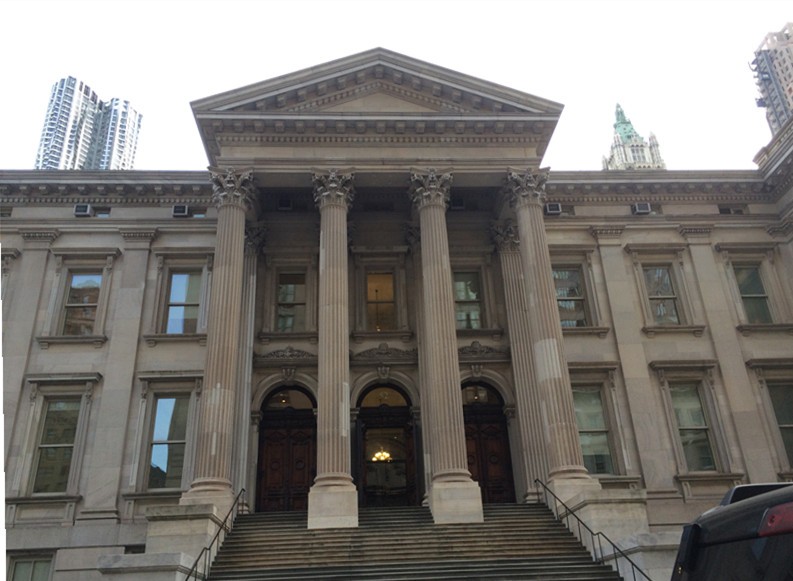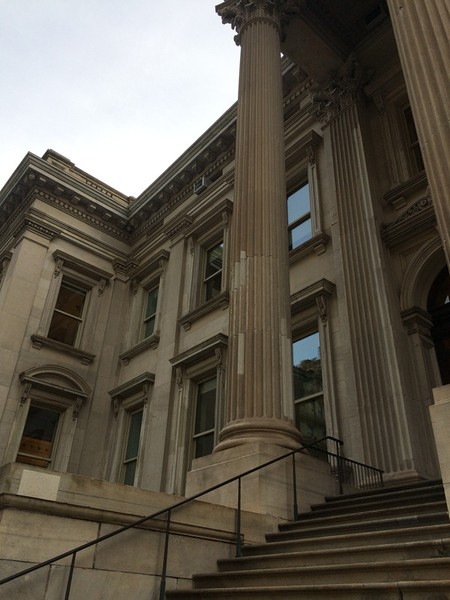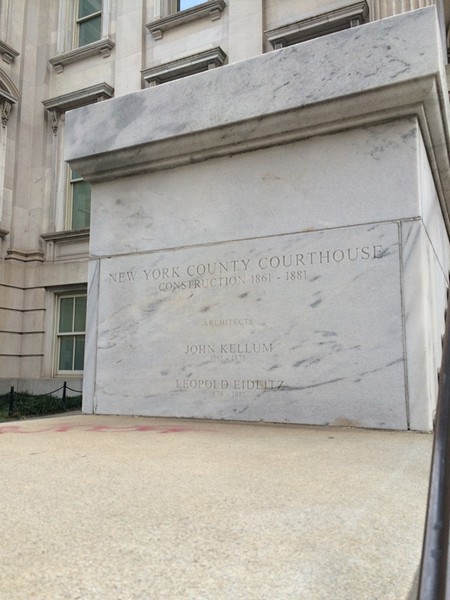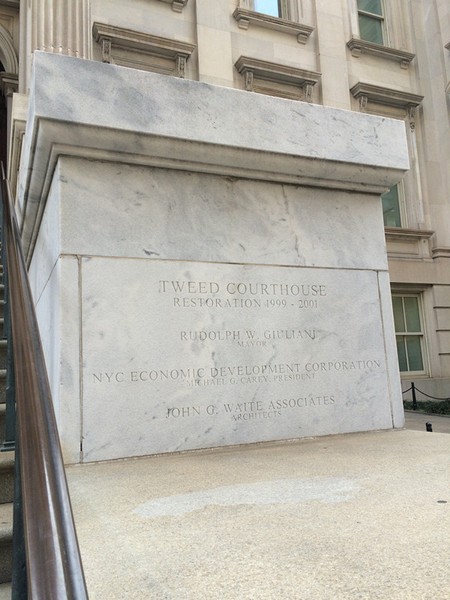Tweed Courthouse
Introduction
Text-to-speech Audio
Images
The front view of the Tweed Courthouse building.

A close view of the building.

Stone indicating the construction of the New York County Courthouse, also known as the Tweed Courthouse.

Stone indicating the restoration of the Tweed Courthouse.

Backstory and Context
Text-to-speech Audio
William M. Tweed,
widely known as "Boss" Tweed, was a very influential Democratic
politician in the 19th century. Tweed was elected to the United
States House of Representatives and served in office from 1852 to 1855. He
was the head of the Tammany Hall political machine and ushered
unprecedented political corruptness into the history of the organization.
Tweed used the construction project of
Tweed Courthouse, a government building, to embezzle large amounts of
money from the budget. For example, a carpenter was paid more than three hundred thousand
dollars for a month's work.[link
3] The numerous city building projects Tweed issued were also a strategy
for him to gain votes from the workers that benefited from the job
opportunities. Ironically, Tweed himself was tried and convicted in this
courthouse and sentenced to 12 years in prison. After his scandals were
exposed, Tweed fled the country and was bailed out many times,
but ultimately came to his demise in Ludlow Street Jail.
Despite its tainted background, the building
itself was nonetheless full of architectural wonders. John Kellum, a
self-taught architect whose famous works include the Cary Building, also on
Chambers Street, and the Alexander T. Stewart mansion on 5th
Avenue, won the commission to design and build the courthouse in
December 1861 and continued to work on it until he died in 1871. The original
design of the Tweed Courthouse was neo-classical, a popular architectural style
in the United States during the 19th century. German architect Leopold
Eidlitz, who also worked on the New York State Capitol building, continued
to build the building after Kellum's death. He added neo-Romanesque elements such
as bricks and stones in vibrant colors. The Old New York County Courthouse was
finally completed in 1881. The New York County Supreme Court used the
building until 1929, and the City Court used it until 1961. In 1999,
the building went through extensive renovation, including the restoration
of the glass skylight in the main hall after its removal during World War II,
and the restoration of the main staircase after its truncation in 1942 to
widen Chambers Street. Today, the Tweed Courthouse remains an important
historical site that allows its visitors to glimpse a bit of the past of New
York City.
Sources
"DCAS - About DCAS - The Tweed Courthouse." DCAS - About DCAS - The Tweed Courthouse. Accessed March 04, 2017. http://www.nyc.gov/html/dcas/html/about/man_tweed.shtml.
"A Look Inside the Tweed Courthouse in NYC [Photos]." Untapped Cities. January 13, 2014. Accessed March 04, 2017. http://untappedcities.com/2011/05/20/touring-the-tweed-courthouse/.
